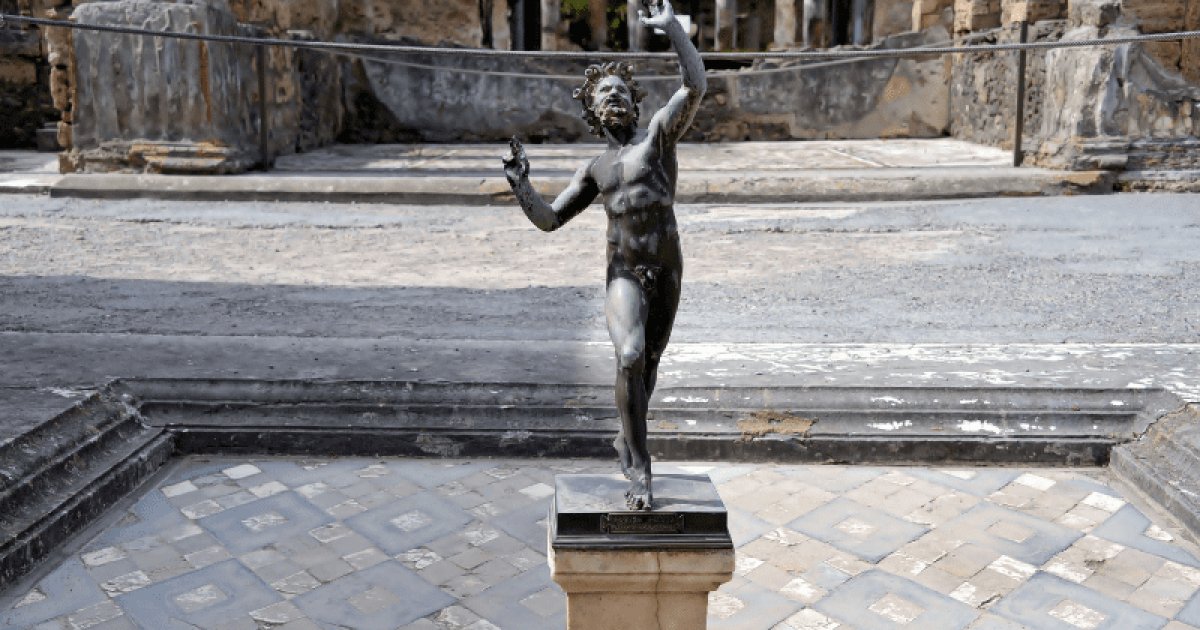HOUSE OF THE FAUN-REGIO VI, House Of The Faun-Regio Vi
 Language: English / USA
Language: English / USA
You are about to discover one of the largest domus in Pompeii, covering an area of almost 3,000 square meters, which certainly belonged to one of the wealthiest men in the city, probably a member of the Satrii family.
On the pavement in front of the entrance you are greeted by a welcome sign in Latin, 'HAVE', and as soon as you enter you see, in the center of the impluvium of the main atrium, a copy of the famous statuette depicting a 'dancing faun' after which the house was named.
Unlike the more common domus, this one had two atria and two peristyles and was divided into a main reception area for receiving clients and guests, and one reserved for the family.
Already from the entrance leading into the main atrium, you can begin to admire the splendor of the mosaic decorations on the floors and the early style of paintings that you will continue to discover as you wander around the domus.
There are mosaics depicting animals such as fish, a cat biting a bird, three doves and animals typical of the Nile River such as hippos and crocodiles, but the most famous masterpiece is to be found in the exedra, a reception hall that separates the two peristyles of this dwelling. It is known as the Great Mosaic and it occupies about 20 square meters with a total number of tiles originally approaching 2 million! Imagine, they are so small that there are up to thirty per square centimeter!
The mosaic is a copy of a Greek painting, made by Philoxenus of Eretria in the 4th century BC for the Macedonian king, Cassander, and described in a text by Pliny the Elder.
It depicts the famous Battle of Issus in which the Macedonian army of Alexander the Great and the Persian army of Darius III clashed.
The predominant colors are yellow, red, black, and white, but the artists who worked on it, through the use of the many tiny tiles, were able to create many shades that make the work as detailed as a painting.
If you want to see the original mosaics, I recommend visiting the National Archaeological Museum in Naples.
Here’s an interesting fact: It is possible to recognize the battle depicted in the Great Mosaic as that of Isso because a leafless tree can be seen in the background. In fact, ancient texts record this clash as the battle 'of the dry tree'.



